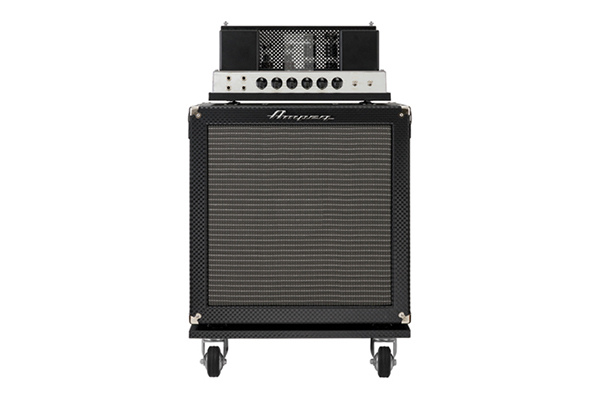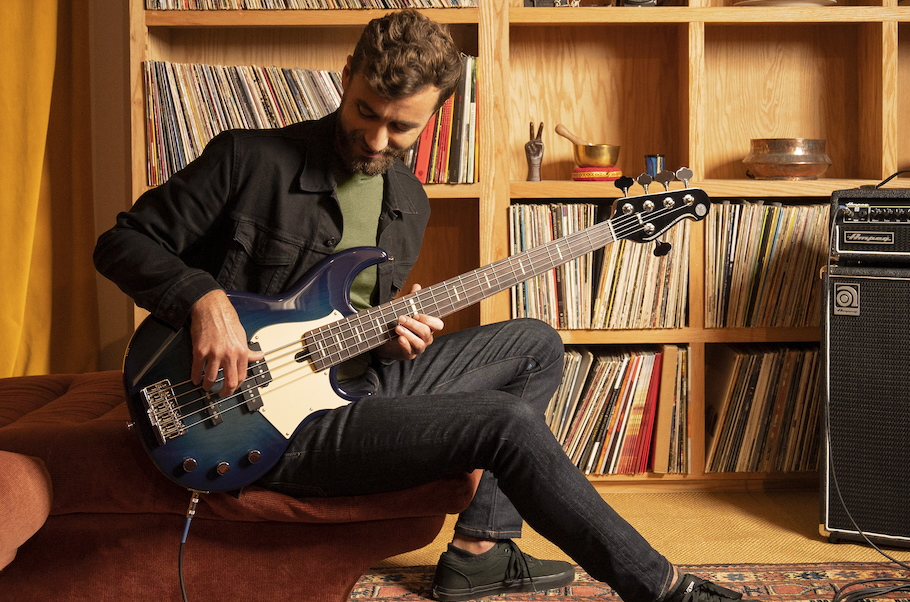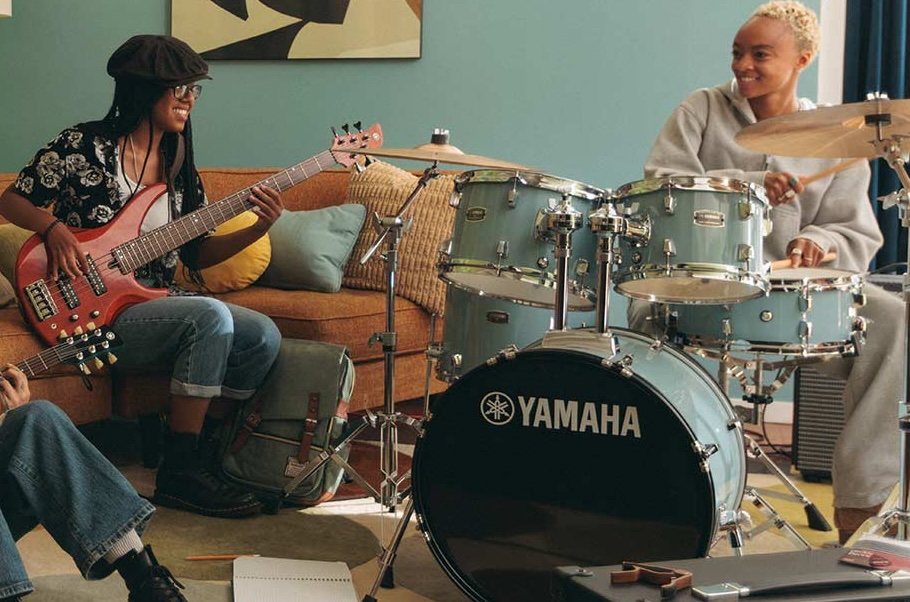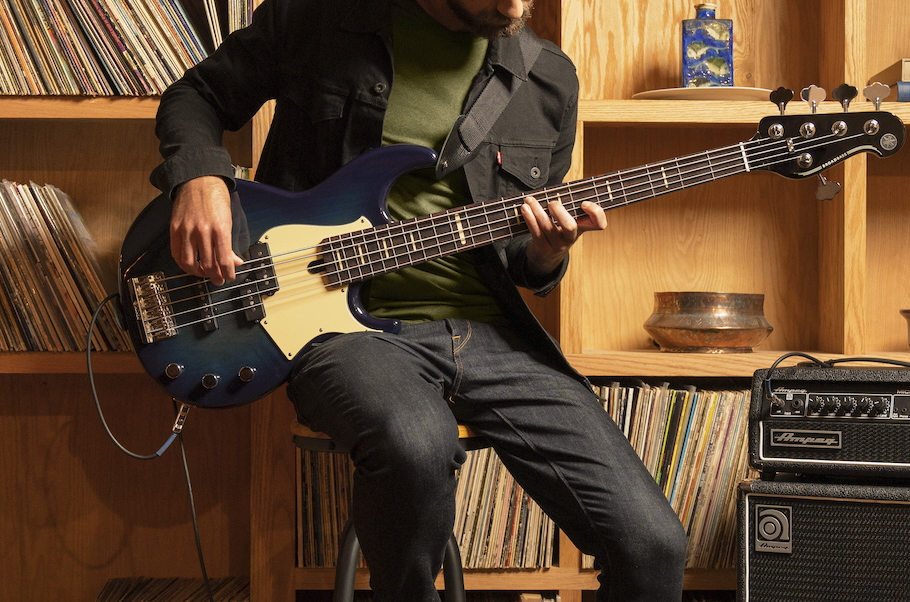A Brief History of Yamaha Electric Bass Guitars
An enduring legacy of low end.
Since the 1960s, the first great era of popularity for the electric bass, Yamaha has set a high standard for technical achievement and exceptional quality. Revisiting their history in that field gives us a fascinating peek at the whimsical 1960s, the heady ’70s, the wild ’80s, the solid ’90s and the innovations of the 21st century … and each new decade found the company pushing the envelope.
Let’s take a look at the long and exciting history of Yamaha electric basses.
FLYING SAMURAIS AND SUPER BASSES
Yamaha bass designs were distinctive right from the start. The company’s first electric basses were the Solid Bass Series, also known as the Flying Samurais, which included the SB-2a, released in 1966, as well as the SB-5a and SB-7a.
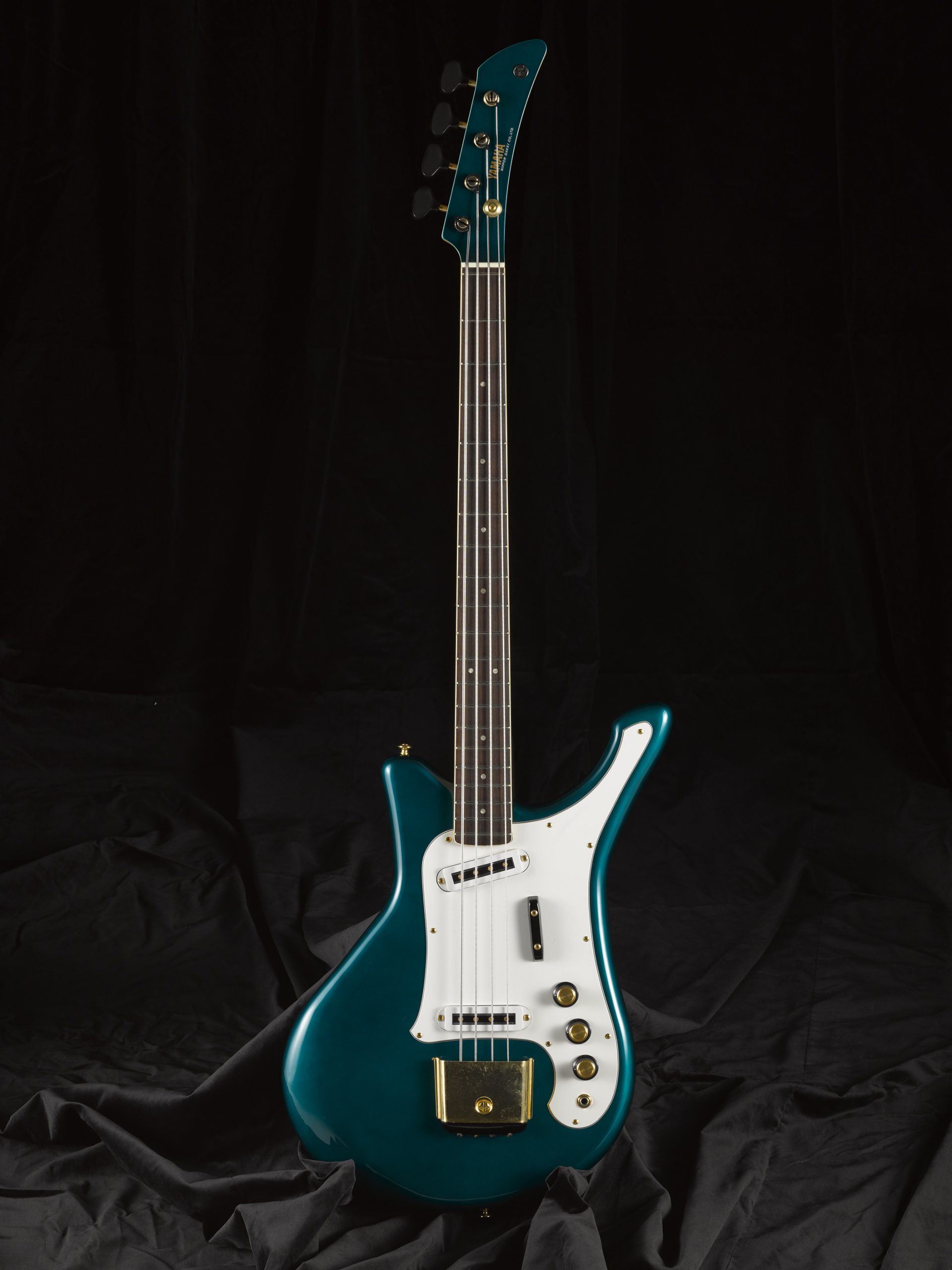
The SA-70 hollow-body soon followed, as did the SB-1c (the so-called “Flying Banana” bass) and the SB-30.

The late-’60s offerings from Yamaha set the company apart, but the 1970s established the template moving forward. Although the Super Bass SB-55 and SB-500 models put a distinctive stamp on a familiar body shape and the SA-70 evolved into the SA-75, the biggest cause for celebration was the 1977 birth of the Broad Bass (“BB”) 1200, a neck-through 4-string with a set of noise-canceling humbucking pickups. It also “reversed” the humbuckers by placing the pickup for the E and A strings closer to the bridge for more articulation, and the one for the D and G strings closer to the neck for more bottom.
The early Broad Bass family included bolt-ons (the BB800, BB1000, BBVI and short-scale BBVIs), as well as neck-throughs like the BB2000. Like the BB1200, this had reverse humbuckers (as shown in the photo below) but was the first Yamaha bass to add a single-coil pickup to noise-canceling humbuckers (commonly known as a “P+J” configuration).
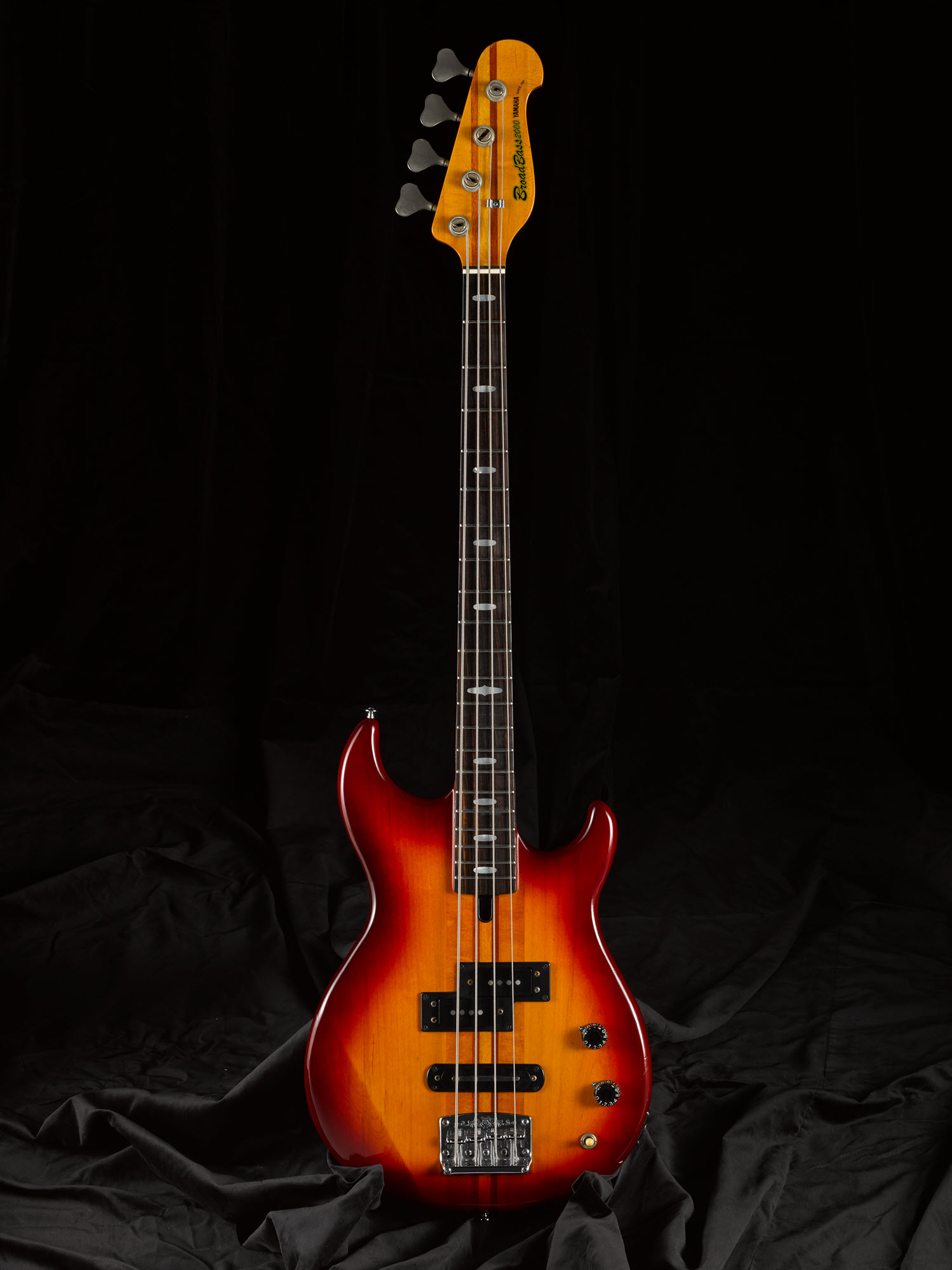
ROCKIN’ IN MOTION
When we think of the ’80s, we think of in-your-face style, and the Yamaha basses of the era fit the mold perfectly. Besides updating 1970s models like the Super Bass, Yamaha released the very first mass-production 5-string, the BB5000, in 1984. The company also offered active versions of that model, as well as the BB1100, BB1200 and BB3000. Other members of the ’80s BB family included the BB1600, BB300, BBIV and BBVII, as well as the BB350 and the fretless BB350F. Short-scale versions of some of these were also available, designated with an ‘s’ in the model number. The BBVII-A featured “soapbar” pickups, but many of the other BBs were available with standard or reverse-P pickups.

But it wasn’t just about Broad Basses. Yamaha Motion Basses, introduced halfway through the decade, are quintessentially ’80s, and there was no shortage of variation. The MB-I, MB-II, MB-IIIPJ, MB-IIIR, MB-50, MB-55, MB-65 and MB-75 were all cool and different, and the MB-III, MB-IIR and LB II models were especially eye-catching.

The Solid Bass flavor, represented by the Pulser Bass PB400 and the JB500R, seem somewhat conservative next to the hair-metal-ready RBX Series basses, the EBX-1 and the headless and compact BX-1. Many of these instruments featured cutting-edge options, including active or passive circuitry, a variety of pickup configurations and the choice of 4-string, 5-string, fretted, fretless and left-handed versions. And then there was the APX-B12F acoustic fretless 4-string — a bass that proved perfect for MTV Unplugged.
CONTINUED GROWTH
In the 1990s, the BB family continued to grow with the BBG4 models and the BBX (a bolt-on version of the neck-through BB3000), but the decade belonged to immensely popular bassists who began long-term relationships with Yamaha. The Attitude Billy Sheehan Signature 4-string, unveiled in 1990, made a mass production instrument from Sheehan’s radically modded 4-string. The TRB line, introduced in 1991 as an upscale departure from the Broad Bass line, became a bedrock of the Yamaha bass brand and included the company’s first 6-string basses — the Custom and the TRB-6P — as well as the TRB-JP John Patitucci Signature model in 1994. A year later, Yamaha released the BBNE Nathan East 5-string. All three offered an exceptionally wide variety of tonalities, and it’s a testament to the company that each of these renowned artists (and updated versions of their signature basses) are still part of the Yamaha family.
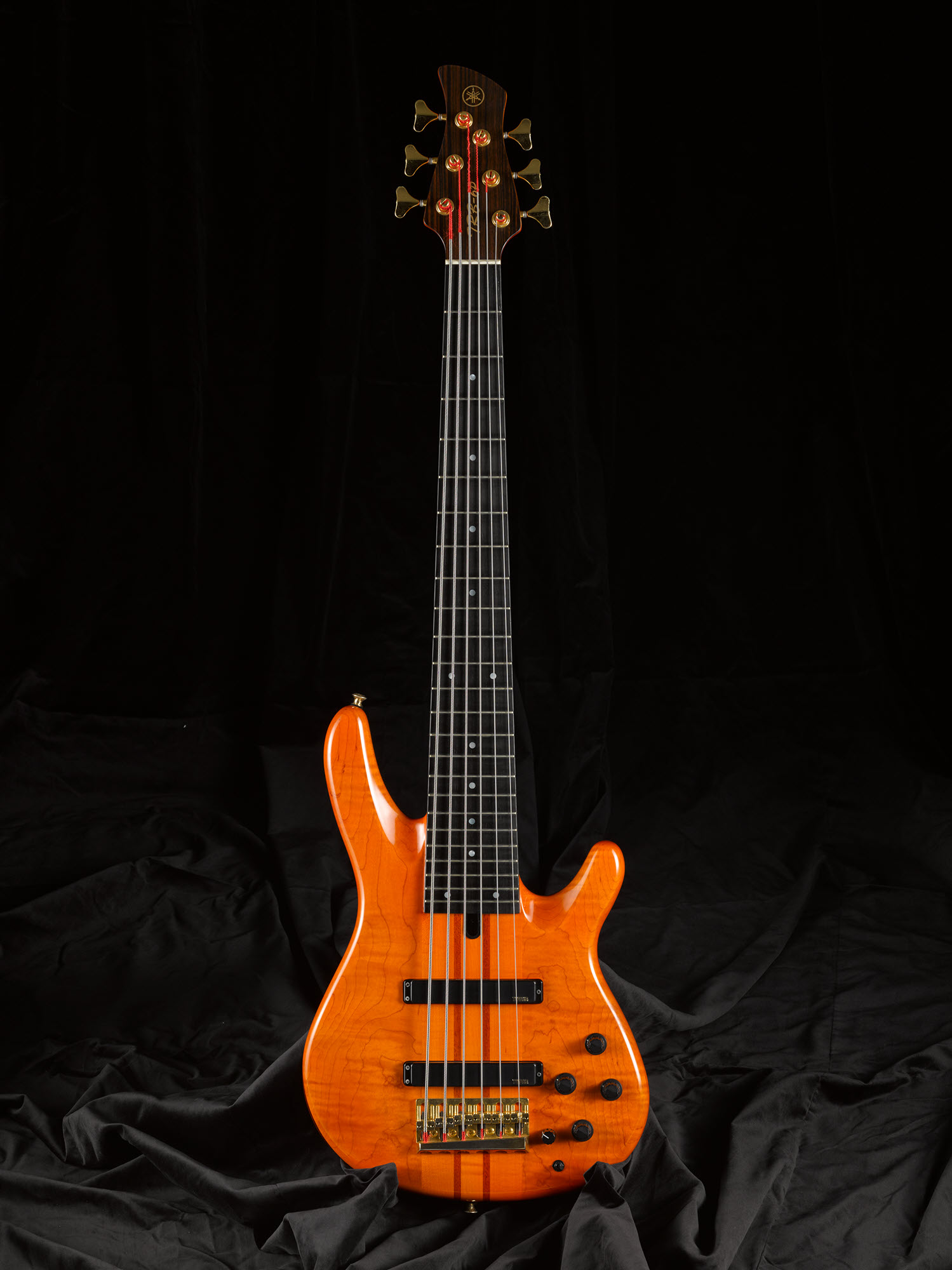
BIRTH OF A NEW MILLENIUM
The new millennium found Yamaha looking both forward and backward. The SBV500, SBV550, SBVJ1 and ultra-rare BJ-5B (an SBV with TRB II electronics) were celebrated revivals of the company’s Solid Bass models from the late ’60s, while the semi-hollow BEX-4 was a cousin to the SB-30.


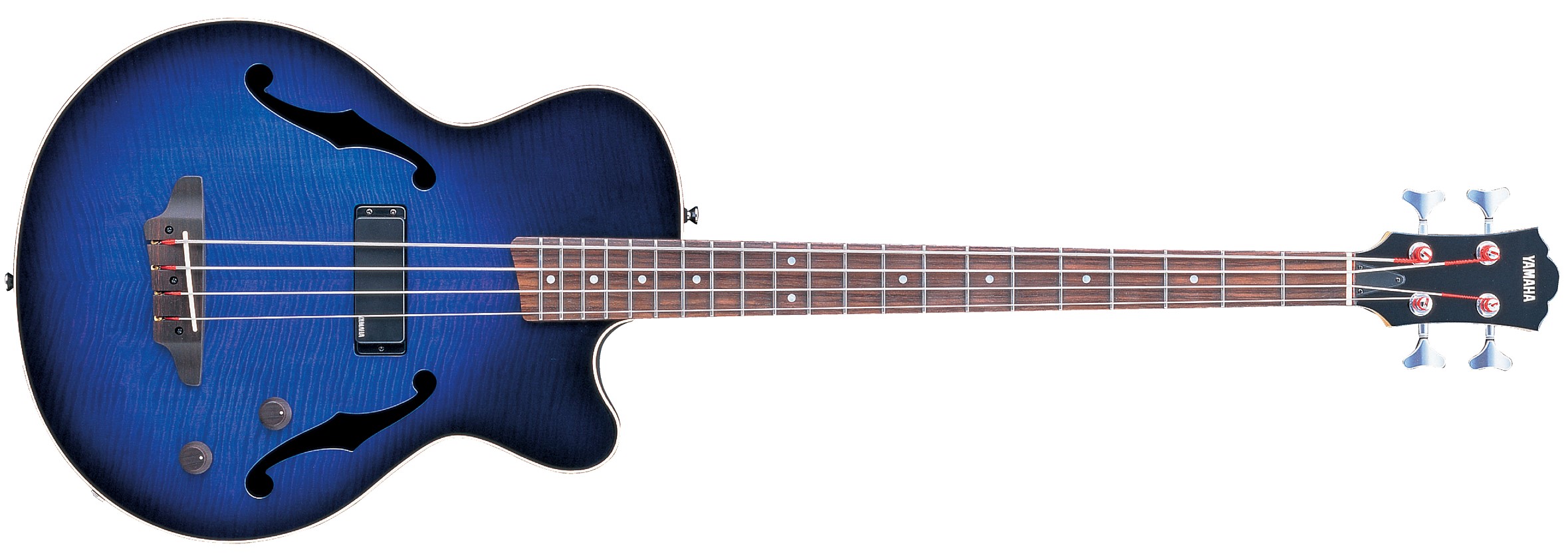
At the beginning of the decade, the company’s only current Broad Bass models were the BB3000 and BB3000MA (maple neck) Michael Anthony Signature instruments, joined a couple of years later by the BB714BS Billy Sheehan model, the BB404/405, BB414/415, BB605 and BB614/615, as well as the BB2004/2005. A new naming scheme, still in place today, matched the last digit of a model name to its number of strings: The BB2004 was a 4-string, the BB2005 a 5-string, and the TRB1006 and 1006J were 6-strings.
One of the company’s best-known innovations from this period was the SLB100 SILENT Bass™, which used a hollow body with a resonating chamber to conjure the sound and feel of an upright bass. This innovative product (marketed in the U.S. as the SVB100) is still available today, along with the limited-edition pro-level SLB-200LTD.
By the start of the 2010s, the BB Series was back in full swing. From budget-conscious to upscale, these included the BB424/425, the BB1024/1025 and the BB2024/2025, as well as “X” versions outfitted with pickguards, metal knobs and metal control plates. (Photos and specs of these can be found here.)

New pickguard options also became available, and Yamaha Guitar Development, the company’s custom shop, birthed next-level creations for artists like Robby Takac’s relic’d short-scale BB414s, Billy Sheehan’s Acrylic Bass with LEDs and a Dreamcar BB bass for Tony Kanal. In addition, TRBX basses, an update of the classic TRB line, debuted with the 300 Series and the 500 Series.
The biggest news, however, was the Broad Bass update in 2017. Award-winning designer Piotr Stolarski’s remix of the classic BB shape boasts a more comfortable contour, lighter weight, a revamped design that makes it easier to switch pickups, and a six-bolt neck joint for enhanced stability.
CURRENT BASSES
As Yamaha approaches the 60th anniversary of its first basses, the company’s current lineup has something for everyone. The updated entry-level RBX Series, though recently discontinued, still provides a great way to start playing bass, and the SILENT Bass (used by artists such as Nathan East, Chris Minh Doky, Kenny Davis, Jim Widner and Charley Sabatino) is now in its third iteration. The TRBX line continues to thrive with a family of its own, from the 174EW 4-string and the slightly pricier 204 and 304 (and 305 5-string) to the upscale 504 and 505 and the fancier 604FM and 605FM.

The BB line has expanded to add the Pro Series (which includes the BBP34 and BBP35 models), the 700 Series (BB734A and BB735A), the 400 Series (BB434, maple-neck BB434M and BB435) and the entry-level 200 Series (BB234 and BB235). Peter Hook, who made magic with a BB1200 back in the ’80s, worked closely with Yamaha designers to create the BBPH Signature model.

The Attitude 30th Anniversary celebrates Billy Sheehan’s deep ties with Yamaha, while the Nathan East and John Patitucci Signature basses (newly updated and refined to comprise the 5-string BBNE2 and 6-string TRBJP2, respectively) will hit the three-decade mark in 2024.

There are diehard fans and avid collectors of Yamaha basses of every era. You’ll find plenty of information about all these models on forums like Talkbass.com, along with tons of YouTube videos that allow you to hear pretty much every bass described here. Whether you get the itch to own a vintage or current model, a visit to your local music store or an online retailer website is all it takes to find a Yamaha bass to call your own.
Check out our companion blog “A Brief History of Yamaha Guitars.”










